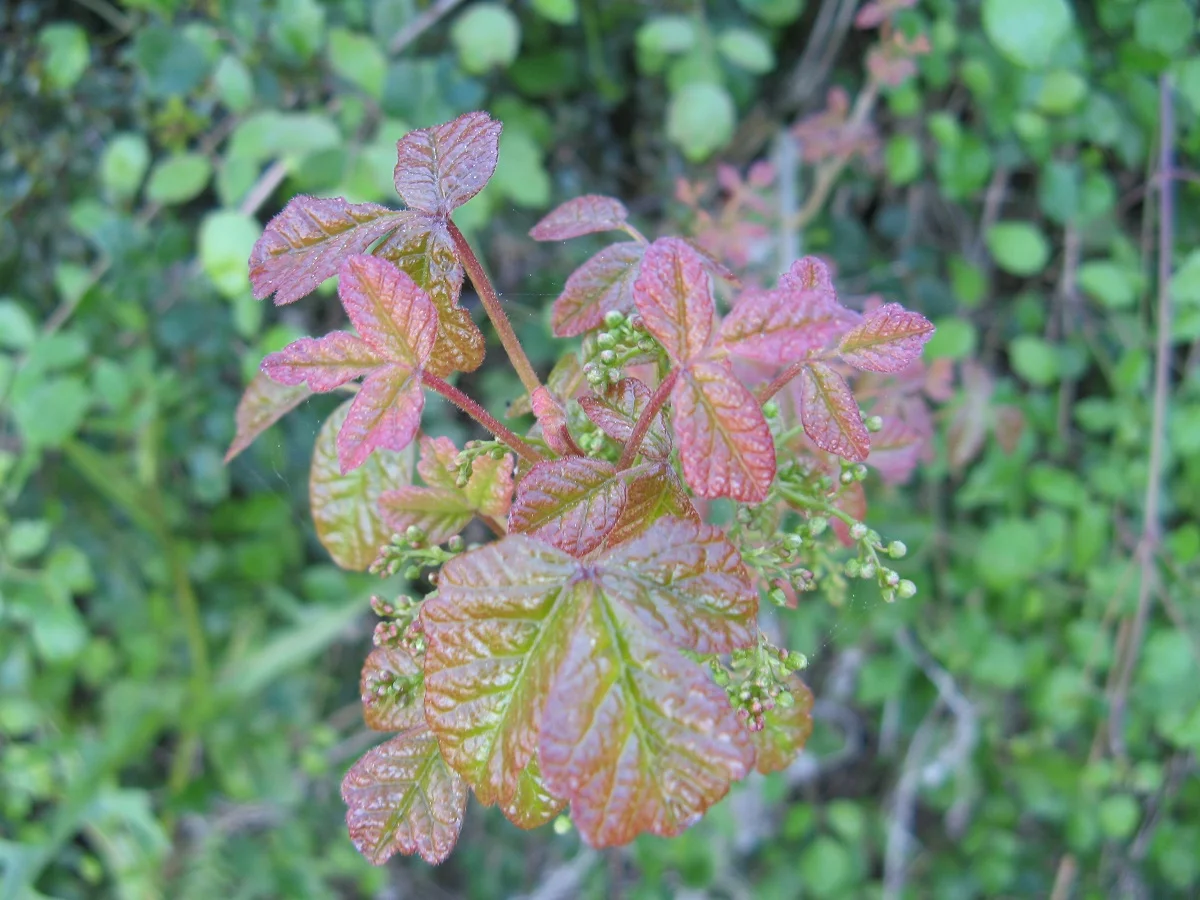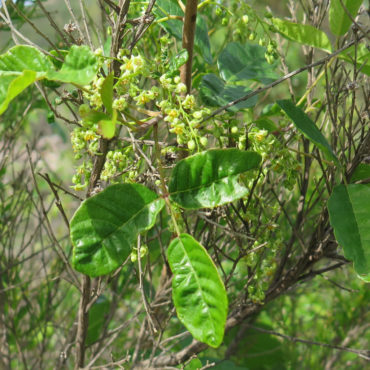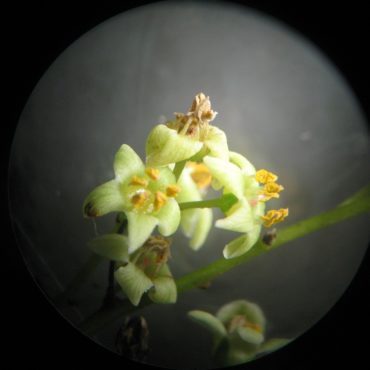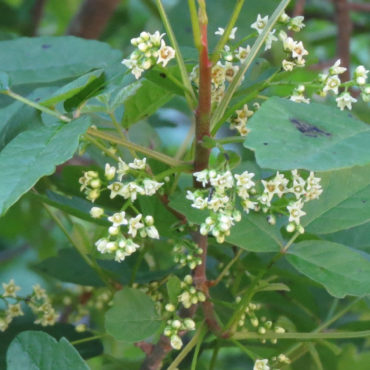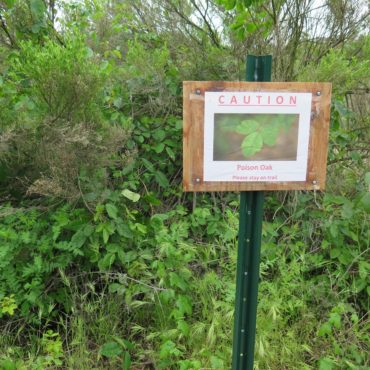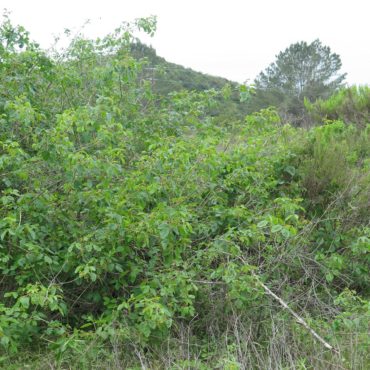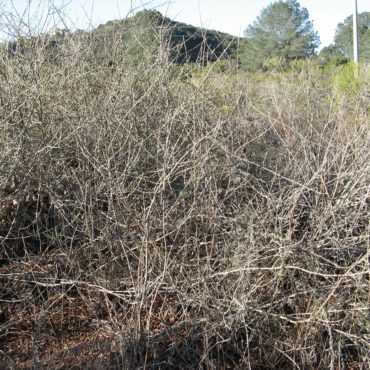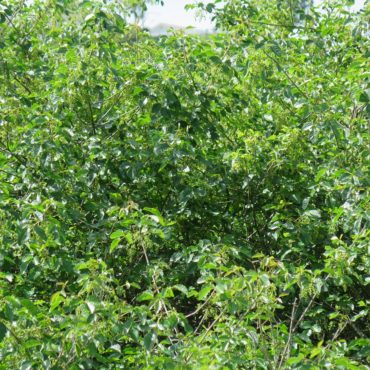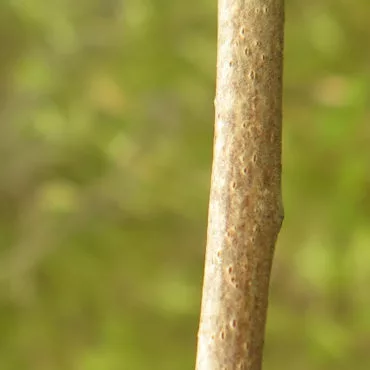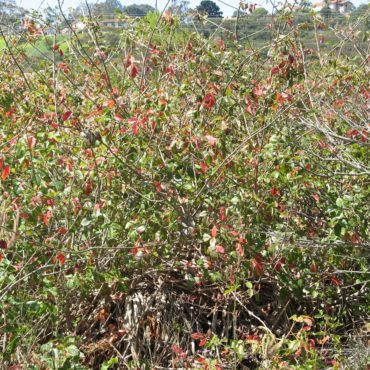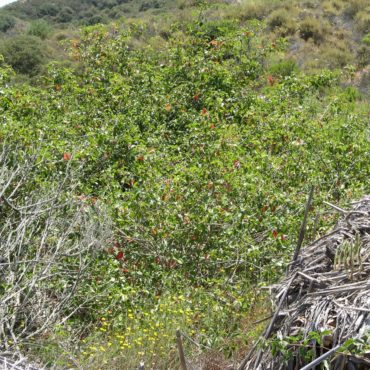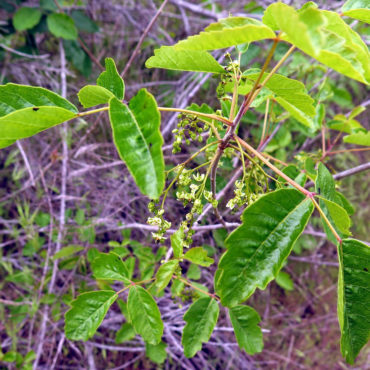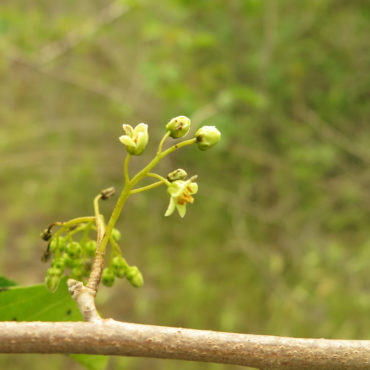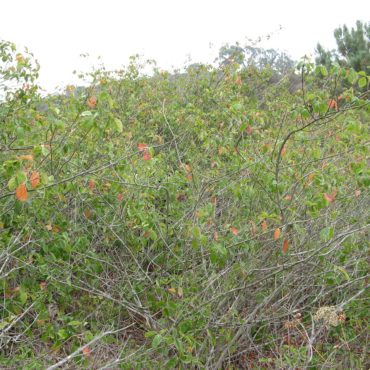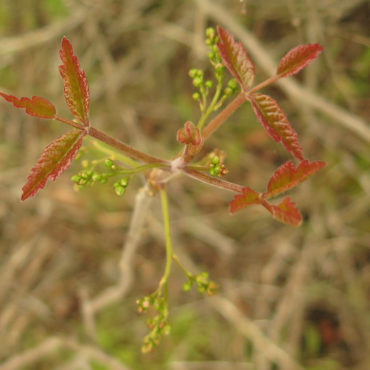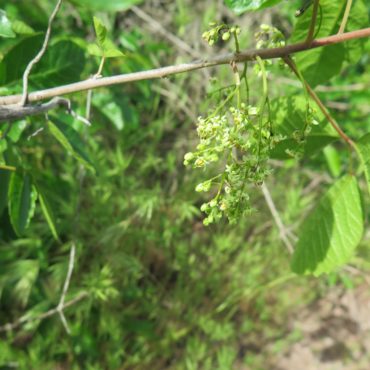Poison oak has variable growth form, largely dependent on its immediate habitat. In open areas it can form a low, weak-stemmed shrub or a dense woody thicket up to 16 feet tall (4 m). In forested or partly shaded areas it is often a thick-stemmed vine that clings to trees with aerial roots and may reach 75 feet (25 m) or more in height. Poison oak has an extensive near-surface rhizome system which allows vegetative propagation. Stem, leaves and fruit have numerous resin ducts, which coat the plant with an oily resin that contains urushiol that cause severe dermatitis.
Leaves are bronze in early spring turning bright green, with smooth, shiny surfaces. They are 4¾ inches (12 cm) or less in length, usually with three ovate, elliptic or obovate leaflets (occasionally five). The margins are variously lobed or toothed and may resemble typical oak leaves. The terminal leaflet is often slightly longer and has a long, slender stem (petiolule); lateral leaflets have very short petiolules, if any. Leaves are deciduous, turning golden and red in the autumn before falling.
Flowers are usually dioecious, forming loose clusters from leaf axils. The sexes can be difficult to distinguish without close inspection (closer than one usually wants to do in the field). They are small, less than ¼ inch (0.8 cm) with usually five (occasionally six or seven) cream colored petals. A nectary disk surrounds the base of the pistil, producing copious nectar. In a mature male flower, petals are flared outward and downward. There are five, sometimes six, stamens with yellow anthers that extend beyond the throat of the flower. The pistil is rudimentary. The female flower is smaller and petals are less flared, having more of a disk shape; it lacks the bright yellow anthers. The single pistil has three styles that are fused at the base and forming three unequal lobes. Poison oak flowers March – April, following the appearance of new leaves.
Fruits are small, rounded and pale. Technically, the fruit is a “drupe”, like a plum or apricot. There is a thin, papery outer layer (the fuzzy skin of an apricot), a pale fleshy middle layer striated with black resin ducts (the flesh of an apricot) and a hard third layer surrounding a seed (the pit of an apricot).

